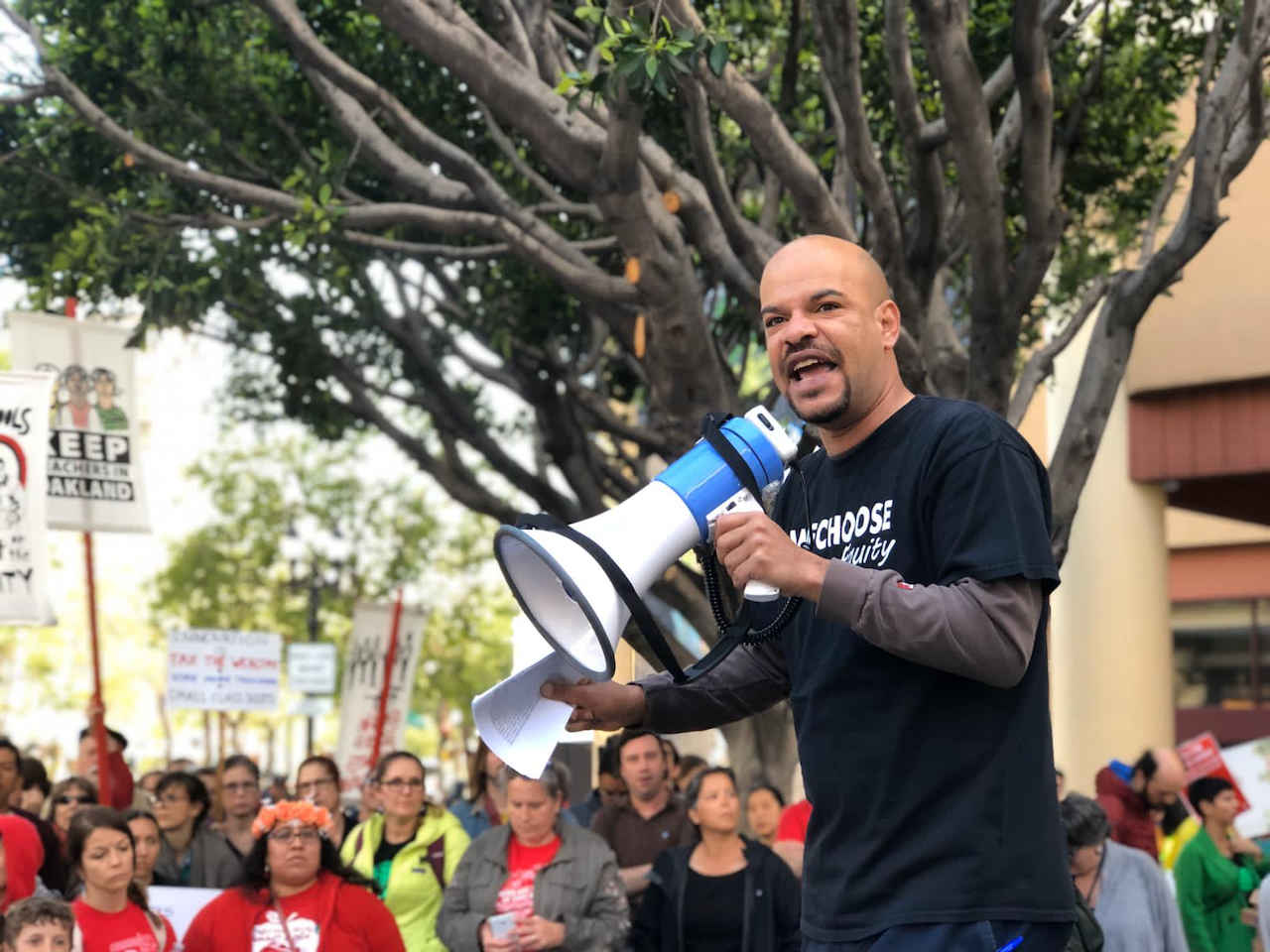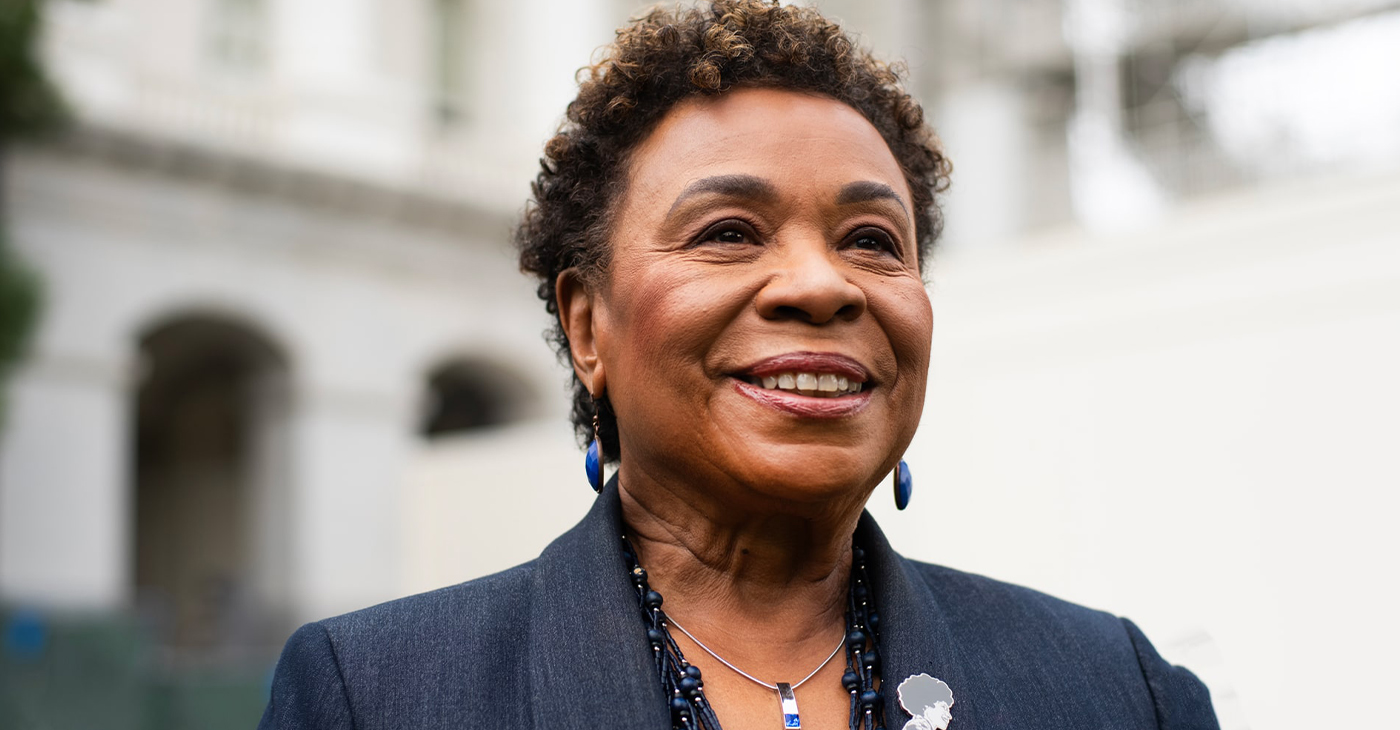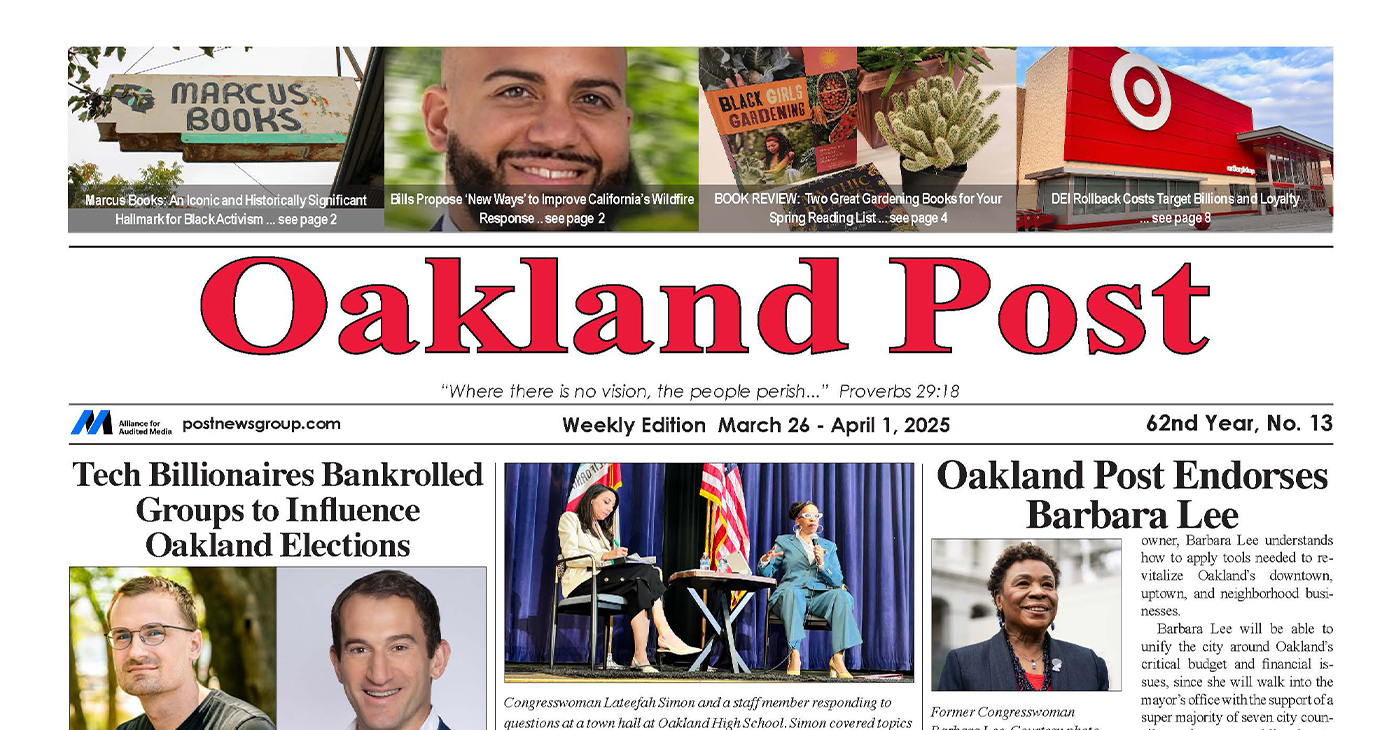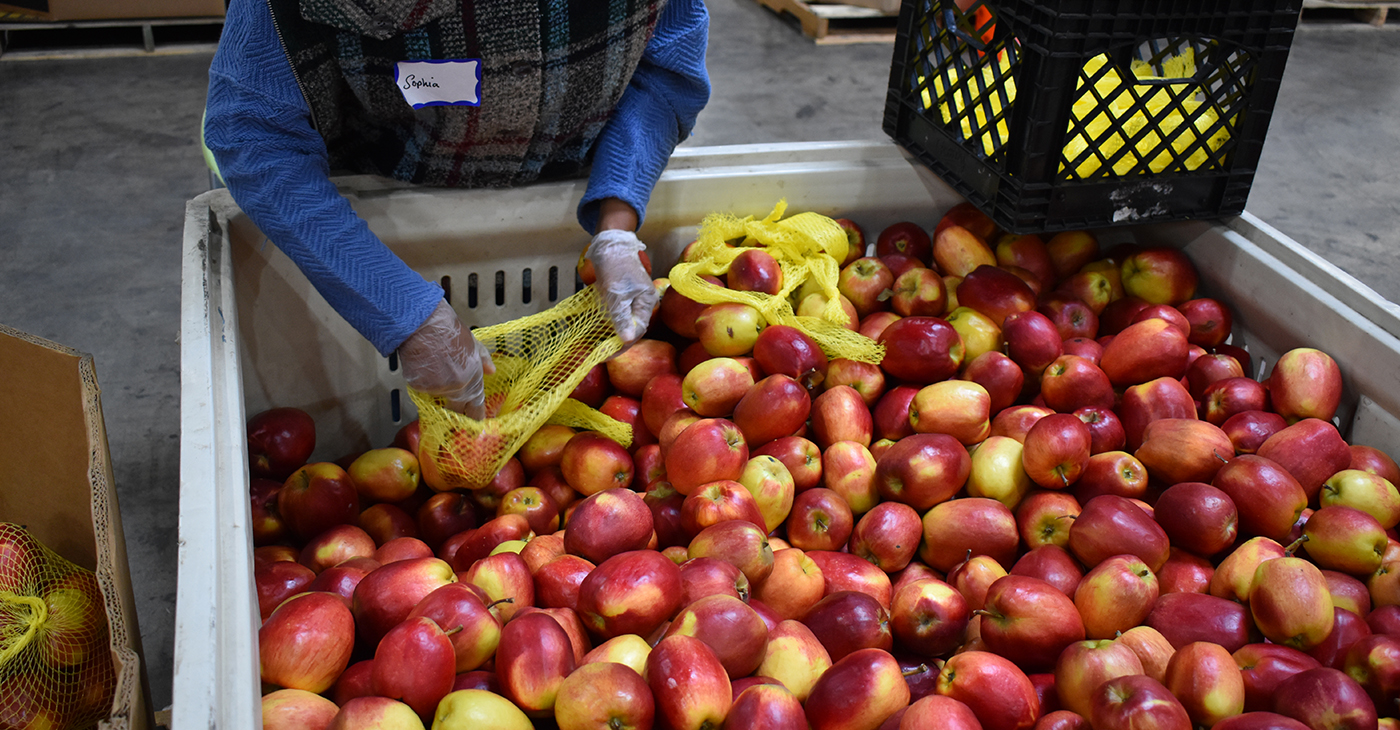Community
Union Backed School Board Candidates Finish Strong Against Billionaire Supported Candidates

As final votes are being tallied, three Oakland School Board director candidates backed by the Oakland Education Association who ran on platforms against privatization, cuts, and public school closures hold significant leads poising them to win against candidates who, backed by political action committees, spent between two to three times more money on their campaigns.
District 1 candidate Sam Davis, District 3 candidate VanCedric Williams, and District 5 candidate Mike Hutchinson, have each thus far secured between 10-13% more votes than their opponents Austin Dannhaus, Maiya Edgerly and Leroy Roches Gaines.
Dannhaus, Edgerly and Gaines received major campaign donations from PACs including Go Public Schools and Power2Families, which are funded in large part by billionaires like Michael Bloomberg, Bill and Melinda Gates, and Alice and Jim Walton, all of whom have encouraged the development of charter schools.
“I knew, even years ago, the only way to counter money power is with people power,” said Hutchinson.
Starting in 2012, Hutchinson began fighting school closures when he founded Oakland’s Public Education Network in reaction to school closures that included Santa Fe Elementary, a school he had attended.
In 2016, Hutchinson ran for School Board on an anti-school closure and anti-privatization platform but only secured about 16% of the vote. Hutchinson claimed years of hard work by himself and other public school advocates helped shift the narrative by 2020 against both the ideas that school privatization is beneficial and that public school closures are needed or inevitable. In 2020, the message of his campaign resonated more with voters.
From 2004 to 2019, Oakland had closed 18 public schools and in 14 of the closed sites, charter schools moved in. The student population of the 16 closed schools was mostly Black. School board members claimed closures were financially necessary to best serve students, and pushed an agenda to close 24 more schools in 2019.
At the same time, Hutchinson, advocates, and OEA united to assert that the closures were strategic and came from underfunding and under-supporting schools that served Black and Brown students.
OEA Vice President Ismael Amendariz said the union had been focusing on problems around teacher retention issues like low teacher wages compared to nearby districts. But they shifted their focus in 2019 to cuts to OUSD and closures of schools by showing that School Board members who were pushing for the 24 closures had their campaigns funded by GO Public Schools.
Since pro-charter school funded Board members were pushing cuts, and school closures in recent history often meant charter schools taking over closed public school sites, they claimed the push to close schools was about privatization instead of financial necessity.
Amendariz said the union made an effort to make issues of billionaires pushing privatization more apparent to people during and leading up to a seven-day Oakland educator strike in late February and early March of last year. Hutchinson said the public was well situated to reject the privatization efforts as Pres. Donald Trump and his Secretary of Education, Betsy DeVos, who are unpopular in Oakland, pushed a similar agenda.
East Bay Democratic Socialists of America were strong supporters of the strike, claiming that the push to spread charter schools, which do not allow unions, was funded by billionaires who wanted to break up labor organizing that could raise wages while improving working conditions and benefits which would drive up taxes on billionaires.
“In the build-up to the strike we had memos, we had education about who was buying our School Board,” said Amendariz. “When we were doing actions during the strike we were very intentional about where we were doing the actions and what was the messaging. That’s when people started to realize there’s something wrong here.”
A teachers’ strike in January 2019 in Los Angeles had similar anti-charter messaging that helped make Oakland’s strike more legible to the public. Hutchinson saw parallels between the two strikes in terms of “who the unions made the target of their strikes.”
“On day two of the L.A. teachers’ strike, UTLA marched on The California Charter School Association headquarters,” he said. “On day two of the strike in Oakland, OEA marched on GO [Public Schools] headquarters.”
Mona Treviño, who has been a parent activist since 2015 and worked with Hutchinson on his campaign said that although public consciousness against schools closures and privitization has recently shifted, “there have been waves of resistance in the last 10 years.” She pointed out battles to stop the closures at Santa Fe, Tilden, Maxwell Park and an occupation of Lakeview Elementary School during Occupy Oakland.
With Hutchinson, she and other advocates have spoken regularly at School Board meetings against closures and cuts. Organizing around legislative issues like the fight for AB 1505, a bill passed in October 2019 that helps give local school boards the power to deny approving charter schools, also has helped to educate voters.
In the months leading up to the strike, non-OEA sanctioned actions by teachers and students helped get themselves, the public, and the union to discuss and consider the issue of budget cuts and closures by laying the groundwork for a strike where issues of billionaire-backed privatization were more clearly addressed.
The school board chose to approve the closure of Roots Middle School January 2019, but not before Roots students, teachers, and parents showed up at School Board meetings to speak out against its closure.
Students were at the forefront of the actions, wielding signs against budget cuts and closures, speaking out, at times though sobs and tears, in public comments against the board choosing to close their school. At one point students convinced the board to engage in a restorative justice circle to discuss the closure, transforming the regular format of the board’s meetings.
“You closing down Roots, to me, is like putting me up for adoption,” said former Roots student Tenai Harris, addressing the School Board. “Roots made me who I am.”
After the School Board announcing its decision to close the school, parents and students decided to boycott attending the school on February 1. Treviño said around 80% of students did not attend school that day. The activism stemming from Roots helped put the issue of closures at the forefront of people’s dialogue during the strike.
In December, 2018, Oakland High School teachers called in sick en masse to protest the lack of a contract with the district, a lack of nurses, too-large class sizes, and low wages. The strike was not sanctioned by OEA and was, in part, a reaction to what teachers perceived as a lack of union action. Oakland High teacher Alex Webster Guiney said at the time that the union was “moving too slow.” On Jan. 18, 2019, teachers and students at four other OUSD High Schools, and a middle school joined Oakland High to stage a mass walkout and march to protest the same issues.
The teacher-led actions soon lead to a student lead sick out, organized by students at Oakland Technical High School, where students from six different Oakland High Schools called out sick on Feb. 8, 2019, and rallied in support of the same demands. Looking back on the sick-outs and walk-outs, OEA Vice President Becky Pringle said that they helped organize high schools for the upcoming seven-day union sanctioned strike.
“Before the strike I didn’t have any awareness of union politics or School Board politics,” said Webster Guiney. “I just knew we didn’t have a contract, we hadn’t had one for 20 months, and our union wasn’t doing anything as far as I could tell.”
At that time, new union leadership coming into OEA was planning for the sanctioned strike. During the strike, and just after, when parents, students and teachers at Kaiser Elementary School repeatedly protested the school’s closure at board meetings, OEA, Hutchinson, and other advocates found it easier then they had in the past to educate the public about the privatized interests involved in school board elections.
“We went on our own little learning journeys,” Webster Guiney said. “People really started to see…there’s a concerted effort to take over Oakland schools.”
During the strike, Hutchinson was regularly at marches, pickets, and protests speaking out against public school closures and charters moving into public school sites, drawing a firm line between him and board members. None of the incumbent School Board members eligible to run for re-election this year chose to.
Hutchinson drew parallels between his campaign and Carroll Fife’s, an organizer who has worked diligently for housing for all in Oakland who recently won District 3’s City Council race.
“Both Carroll and I are organizers who have been on the front lines for years around all of these issues,” he said. “I’m really proud that it shows that in Oakland we have a by-any-means-necessary, inside-outside approach to politics.”
With the message more legible to the public, OEA-backed campaigns found it easier to talk to voters and drum up volunteers. Hutchinson had around 100 volunteers who worked almost 10 Saturdays in a row— missing one day due to wildfire smoke—doing phone calls and walks through his precinct to engage with voters.
In District 3, OEA helped phone 12,000 voters to support Williams, who opposes public school closures, against Edgerly, whose campaign received more than $100,000 from Go Public Schools and over $50,000 from Power2Families.
While three union-backed candidates are poised to win their races, one candidate backed by OEA, Ben Tapscott of District 7, looks poised to lose as he has received about 4.5% fewer votes than Clifford Thompson, whose was funded by Go Public Schools and Power2Families. This means the Oakland School Board has a narrow majority of candidates whose campaigns were backed by billionaires.
Still, with strong public support against closures and the privatization of schools and a new round of School Board director elections coming in 2022, OEA and public school advocates are hopeful.
“People don’t like billionaires and they trust teachers,” said Amendariz. “Bernie Sanders and Trump helped drive that point well. Voters are going with teachers.”
Activism
Oakland Post Endorses Barbara Lee
Barbara Lee will be able to unify the city around Oakland’s critical budget and financial issues, since she will walk into the mayor’s office with the support of a super majority of seven city council members — enabling her to achieve much-needed consensus on moving Oakland into a successful future.

As we end the celebration of Women’s History Month in Oakland, we endorse Barbara Lee, a woman of demonstrated historical significance. In our opinion, she has the best chance of uniting the city and achieving our needs for affordable housing, public safety, and fiscal accountability.
As a former small business owner, Barbara Lee understands how to apply tools needed to revitalize Oakland’s downtown, uptown, and neighborhood businesses.
Barbara Lee will be able to unify the city around Oakland’s critical budget and financial issues, since she will walk into the mayor’s office with the support of a super majority of seven city council members — enabling her to achieve much-needed consensus on moving Oakland into a successful future.
It is notable that many of those who fought politically on both sides of the recent recall election battles have now laid down their weapons and become brothers and sisters in support of Barbara Lee. The Oakland Post is pleased to join them.
Activism
Oakland Post: Week of March 28 – April 1, 2025
The printed Weekly Edition of the Oakland Post: Week of March 28 – April 1, 2025

To enlarge your view of this issue, use the slider, magnifying glass icon or full page icon in the lower right corner of the browser window.
Activism
Oakland’s Most Vulnerable Neighborhoods Are Struggling to Eat and Stay Healthy
For this story, we focused on eight of the 12 ZIP codes in Oakland, those pertaining to East and West Oakland. The ZIP codes include 94601, 94603, 94505, 94606, 94607, 94612, 94619, and 94621. We chose to concentrate on these specific areas, known as the Oakland Flatlands, due to its longstanding history of extremely low-income households and racial inequalities compared to ZIP codes in the Oakland Hills.

These Are the Contributing Factors
By Magaly Muñoz
On a recent trip to the grocery store in West Oakland, single mom Neemaka Tucker contemplated what’s more important to her family’s needs – expensive fresh produce or cheap instant ramen noodles.
“I’m trying to teach my kids to eat healthy, but then my pocket is like, ‘I’m broke’. Getting the processed foods is going to fill you up faster, even though it’s not good for your body,” Tucker said.
Bay Area residents are spending over $100 more a month on groceries than they were pre-pandemic. Those higher costs are straining wallets and forcing families to choose cheap over healthy, possibly contributing to more health problems. These problems are disproportionately affecting people in East and West Oakland, in neighborhoods primarily of low-income families of color.
Oakland residents are experiencing more health problems linked to poor diets, like diabetes, obesity, and heart disease than before the pandemic, particularly in neighborhoods of East and West Oakland, data shows.
“We see a direct relationship between what we eat and medical problems. What we eat affects our weight, our blood pressure and all those things circle back and have an effect on your diseased state,” said Dr. Walter Acuña, a family physician at Oakland Kaiser Medical.
According to data by UCLA Center for Health Policy Research, about 1 in 10 adults in East Oakland neighborhoods experience food insecurity. That’s twice as many people than in most other parts of the city.
Oakland residents’ health concerns are growing
For this story, we focused on eight of the 12 ZIP codes in Oakland, those pertaining to East and West Oakland. The ZIP codes include 94601, 94603, 94505, 94606, 94607, 94612, 94619, and 94621. We chose to concentrate on these specific areas, known as the Oakland Flatlands, due to its longstanding history of extremely low-income households and racial inequalities compared to ZIP codes in the Oakland Hills.
According to UCLA research, about one out of every five adults under 65 in these areas of East Oakland reported poor or fair health. But these problems weren’t isolated to East Oakland. About one in six adults under 65 reported poor or fair health in areas of West Oakland, like the 94607 ZIP codes.
A handful of ZIP codes (94601, 94603, 94605, 94621) in East Oakland also have the poorest health outcomes of any area in the city. Residents there experience the highest rates of obesity and adult diabetes.
UCLA data shows that there has been a two percent increase in the number of adults diagnosed with diabetes in West Oakland (ZIP code 94607) since 2017- 2018. An estimated 11.8% of adults in 94607 in 2021-22 said they had diabetes, whereas 9.8% reported it several years before.
But the problem is more significant, only a few miles away.
In the 94621 neighborhood in East Oakland, an estimated 16.6% of adult residents reported having diabetes in 2021-2022, and the neighboring ZIPs averaged about 15%, according to UCLA data. 2017-2018 data show that only 11% reported a diabetes diagnosis in the 94621, a 5.6% change from recent numbers. The ZIP code estimates are higher than the states’, county’s, and city estimates—11%, 12.4%, and 12.3%, respectively.
Doctors working with Oakland and the larger Alameda County area are seeing an increase in the number of people coming to their offices with chronic health issues in the last few years.
Acuña said he’s frequently treating more and more adults with diabetes and hypertension.
Patients often tell him that it’s easier to afford unhealthy, cheap food than it is to afford the things that are going to make them feel better and stay healthy, he said
Dr. Steven Chen, Chief Medical Officer of Alameda County’s Recipe4Health, said that he’s seeing more kids across the region suffering from obesity, or adults on the brink of developing chronic illnesses, than in previous years.
“Chronic disease is a big epidemic. What’s the root of it? I think food is a big component,” Chen said.
He has seen evidence of improved health when people have access to better food. People with Type 2 diabetes experience a boost in metabolic and sugar management to healthy levels, and those with high blood pressures experience normal numbers.
Recipe4Health is a county-wide program that uses food-based interventions to treat and prevent chronic conditions, address food insecurity, and improve health and racial equity. The program provides up to 12 weeks of groceries for people who are at risk or are experiencing food insecurity.
It’s important for public sectors to have these kinds of investments locally because the results are tangible, he said.
“If our values are that no one gets left behind and that everyone should have an equal opportunity to health and health equity, then we need always to ensure that we are serving those communities that often are left behind,” Chen said.
Experiencing food insecurity in Oakland
Unfortunately, healthy food is becoming increasingly difficult for Oakland residents to access. Over the last five months, The Oakland Post heard from over 50 residents about their struggles finding and affording healthy food. We visited food banks, talked with people at markets and food distribution events, and distributed an online survey.
We learned that residents are travelling to other nearby cities to get cheaper groceries, financial assistance programs like CalFresh are challenging to navigate, wages are low, and food is getting more expensive while the quality appears to be dropping.
Andres, who asked us not to use his last name due to his undocumented status, said he often relies on food distribution from organizations like the Street Level Health Project for his weekly groceries. He wouldn’t be able to eat complete meals otherwise, due to the lack of consistent employment at his car washing job during the winter months.
With eight people living under one roof and only three adults contributing to the household income, he said things are tight.
“During these months, we’re always backed up on paying our bills, including rent, and we’re trying to do more with what little that we have, which is not much,” Andres said.
Andres’ biggest complaint about grocery shopping is the lack of fresh and healthy food that is affordable and good quality. He’s been to food banks and grocery stores where the produce rots within a day or two of receiving it, forcing him to buy fast food in order to feed his family.
Down the street at the Unity Council’s weekly grocery distribution, Mayra Segovia, a single woman in her 50s, said she visits this location almost every week to get food. Her fixed income on Social Security makes it difficult to afford her basic necessities.
Segovia said she receives CalFresh funding to pay for her groceries, but the almost $300 assistance is not enough to get her through the month, so she gets creative. She often does favors for local vendors in exchange for meals. Even with the Social Security checks of a little over $1,000 a month and other resources like subsidized housing, the cost of living is going up. She’s blaming the government for their contribution to the problem.
“We’re not all rich like Donald Trump and all those corrupt politicians, we don’t have that much money like that,” Segovia said.
Social service assistance is falling short
Several people we spoke with said financial food assistance like CalFresh isn’t supplementing the gaps in their budgets.
Neemaka Tucker, mom of two elementary-aged kids, said she receives $123 a month from CalFresh, yet she’s spending almost $600 on groceries at the store. She feels like she should be getting more assistance, especially considering her lower, single income. “I’m appreciative [of the CalFresh funds] that I get anything because every little bit helps, but it’s still not enough for my family,” Tucker said.
A lack of grocery store options in West Oakland has also made it even harder to get food on the table, Tucker said.
There are more convenience stores than grocery stores within walking distance to her home on the northeast side of West Oakland, and the prices seem to be exacerbated because of their limited food stock, Tucker said. A gallon of milk at the store could run her up to $3.80, but at the local convenience market, it’s nearly $6.
“I just find that the majority of the money that I’m spending is on the travel to get the food, then on the food itself,” Tucker said.
Healthy groceries are a necessity to manage Tucker’s health. She is diabetic and has high blood pressure, so eating and buying fresh produce is important because keeping her symptoms at bay is a must for her health. It’s been difficult to get what she needs for her body to maintain her chronic health problems because she often battles with lack of affordability of what she’s buying, she said.
“I find myself trying to figure out what’s healthy for each person and then have enough of it so we all can [eat well],” Tucker said. “Back in the day, bread and potatoes used to be staples to get your kids full, but food like that makes me sick because that’s too much [carbohydrates] since I have diabetes.”
Both her kids are athletes who also need healthy food. She’s finding that even though her kids don’t eat meat, which tends to be expensive, she’s still spending more than she’d like to on fruit and vegetables.
In Oakland, the local investment is low
In the last year, the city has cut grants to nonprofits like Meals on Wheels, which serves 3,000 hungry seniors, and Street Level Health Project, which provides groceries and meals to undocumented day laborers. Tax measures, like the Sugar-Sweetened Beverage Tax, were intended to help decrease the food and health crisis but are also not being managed in the way Oakland residents voted for, according to community leaders and advisory board members. The majority of the tax money is going towards funding city agencies.
The Oakland Post contacted city and county officials several times for comment but did not get a response.
Across the Bay Area, San Francisco is investing millions to address food insecurity through a pilot program that establishes free grocery stores in food desert districts. Shoppers of the pilot market said they have seen a positive change to the way they feed their families and how much they’re able to save every month.
Oakland resident PC, who chose to use an abbreviated version of his name to protect his privacy, said he’d be interested in seeing a market like the one in San Francisco because it would alleviate the tight budget he has for himself.
PC said he’s had some unpleasant experiences with food distribution workers being rude to residents waiting for grocery bags. “The line is already long as it is and can sometimes feel shameful when you’re going through hard times,” PC said, so an option to get free food in a setting that resembles a market would be ideal.
The garden lead for West Oakland’s People’s Programs, ab banks, helps deliver fresh produce from a local garden to households in the projects, because the need for healthier options has been particularly high in recent years, they said.
People’s Program serves around 170 people in the 94607 area with groceries, along with a mobile health clinic and free breakfast program. Their goal is to serve a community that already deals with its own set of disadvantages, and looks to show people that not everything needs to contribute to a bigger gain and people have the right to use the local land to grow the food they need.
Banks said they see firsthand what the lack of investment in West Oakland has done to folks: homelessness, priced out living situations, environmental racism, and lack of food access.
They explained that although they feel a duty and a calling to the work at People’s Program to help an underserved neighborhood, they questioned how the city is pouring millions of dollars towards finding solutions to Oakland’s biggest problems but no significant change has happened yet. banks said there are basic necessities that should be birthrights and not restricted to what the government thinks people need.
“[The investment] is not enough. There’s no access to fair housing, not enough access to food, not enough access to healthcare. But that’s just not specific to Oakland, that’s a United States problem,” banks said.
Reporter Magaly Muñoz produced this story as part of a series as a 2024 USC Annenberg Center for Health Journalism Data Fellow and Engagement Grantee.
-

 Activism4 weeks ago
Activism4 weeks agoUndocumented Workers Are Struggling to Feed Themselves. Slashed Budgets and New Immigration Policies Bring Fresh Challenges
-

 Activism2 weeks ago
Activism2 weeks agoWe Fought on Opposite Sides of the Sheng Thao Recall. Here’s Why We’re Uniting Behind Barbara Lee for Oakland Mayor
-

 Activism4 weeks ago
Activism4 weeks agoOakland Post: Week of March 5 – 11, 2025
-

 #NNPA BlackPress2 weeks ago
#NNPA BlackPress2 weeks agoRev. Dr. Jamal Bryant’s Black Church Target Boycott Mobilizes 150,000
-

 Activism2 weeks ago
Activism2 weeks agoSan Francisco Is Investing Millions to Address Food Insecurity. Is Oakland Doing the Same?
-

 #NNPA BlackPress4 weeks ago
#NNPA BlackPress4 weeks agoTrump Moves to Dismantle Education Department
-

 #NNPA BlackPress4 weeks ago
#NNPA BlackPress4 weeks agoFighting to Keep Blackness
-

 #NNPA BlackPress2 weeks ago
#NNPA BlackPress2 weeks agoRecently Approved Budget Plan Favors Wealthy, Slashes Aid to Low-Income Americans

























































